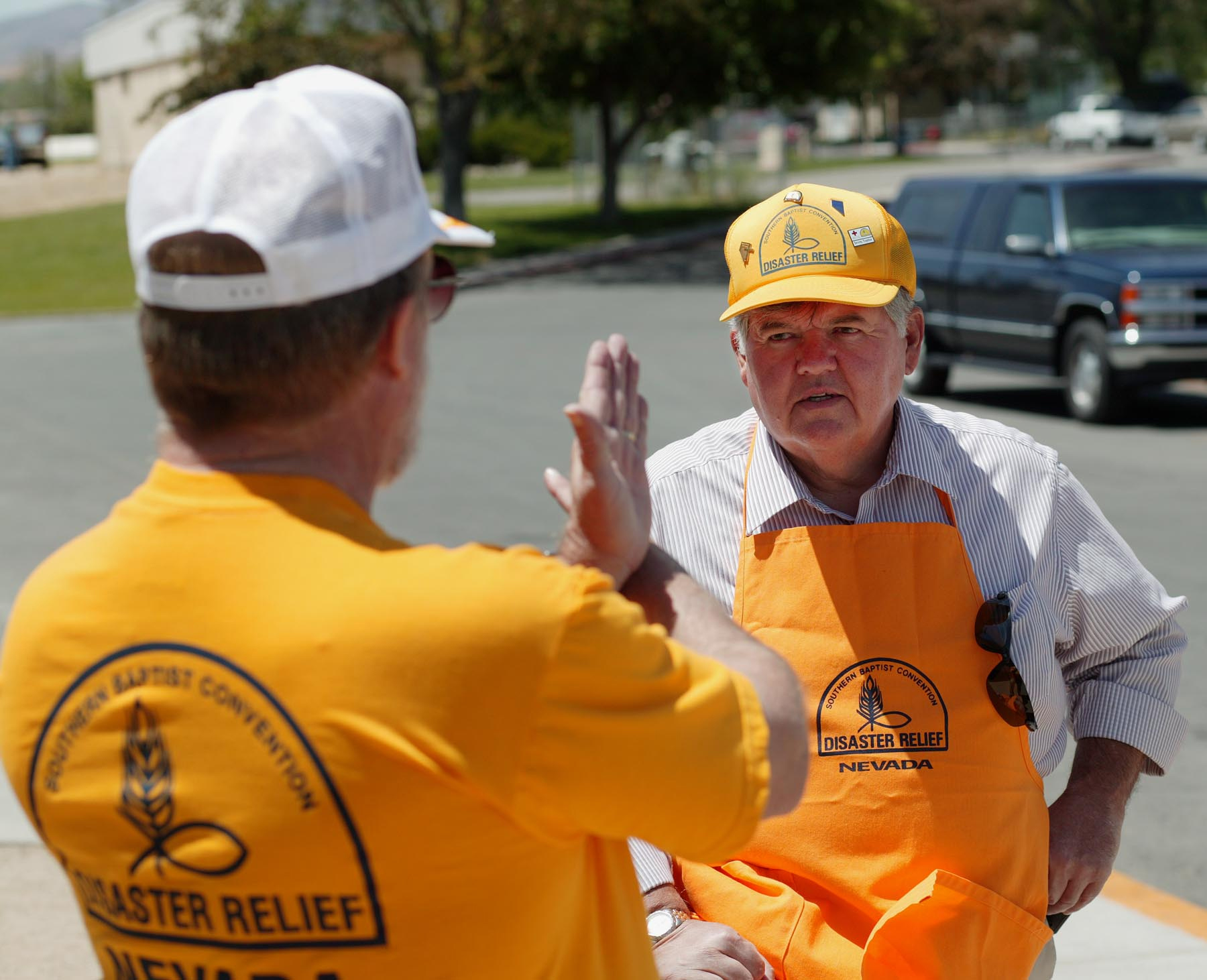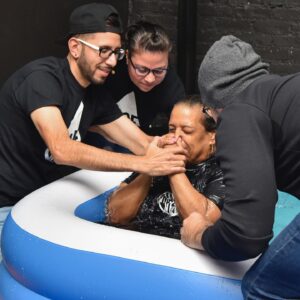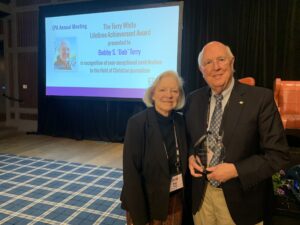
EDITORS’ NOTE: The Week of Prayer for North American Missions, part of the 2005 North American Missions Emphasis, is being observed in many Southern Baptist churches March 6-13. Baptist Press will present profiles on the featured missionaries through March 15. For more information on the emphasis, visit www.AnnieArmstrong.com.
FALLON, Nev., (BP)–After a week of driving, having put 900 miles on his car, Mitch Bryant watches the sunset as he pulls into the driveway of his home. Driving between churches in Nevada is nothing like what he was used to back home in Arkansas when he would visit fellow pastors.
Now, as associational missionary for Nevada’s Lahontan Baptist Association, he thinks nothing of driving 175 miles to visit a church.
His association, one of only four in Nevada, covers a five-county, 45,000-square-mile area dotted with 16 churches and six missions. He bases his ministry from the town of Fallon, 60 miles east of Reno.
Bryant battles a variety of problems in trying to stitch the churches together into a Baptist quilt in the west-central part of the state. One of the biggest is the loneliness and isolation that permeates the lives of the pastors and their families.
“The population out here is really scattered. Most of our people live in population centers near a county seat, but once you get outside of the city limits you don’t see many residents. There are some groups of people who live on cattle and dairy farms and ranches but those are even more isolated than the towns are,” he explains.
Bryant and his wife, Sandi, are among nearly 5,200 missionaries in the United States and Canada supported by the Annie Armstrong Easter Offering for North American Missions. They are featured during the March 6-13 Week of Prayer and North American Mission Study, which this year focuses on the theme “Answer His Call.”
The association spans 260 miles from north to south and 175 miles east to west. And that’s why it’s so hard to start or grow a church. Distances are such that people don’t get together on a very regular basis because of the time it takes to drive. In an area where it’s not uncommon to drive 60 or 100 miles to buy groceries, people socialize when they can but don’t look for opportunities to spend hours behind the wheel of a car.
Bryant and Sandi, who he calls “my right hand and my left hand,” serve as encouragers to pastors and their wives and help provide resources and leadership training to laity.
“The distances really take a toll on the wives,” Sandi Bryant notes. “They feel forgotten so much of the time, so I send birthday cards, help plan wives’ retreats and be a listening ear.
“In the South people talk about distances usually in terms of miles. They will say, ‘It’s 20 miles to this location or 15 miles to that church.’ But out here we talk in terms of time.
“But it’s always worth the drive to be with the members of the church and the pastor and his family. We don’t take fellowship for granted out here,” she reflects.
That’s not the way it’s always been for the couple. Mitch Bryant grew up in Missouri in the home of parents who were active in their Southern Baptist church. He was studying industrial technology in college in Pittsburg, Kan., when he became active in a Baptist Student Union and met his future wife.
That’s when he surrendered to the ministry and began pastoring bivocational mission churches in southeast Kansas. Following graduation from Southwestern Baptist Theological Seminary in Fort Worth, Texas, he moved to Arkansas where he pastored two churches.
A seminary friend who was pastor of a church in Boulder City, Nev., asked him if he would lead a revival there, and that’s how he was introduced to the state. It turned out to be a providential meeting.
While there he met Neal Myers, who was serving as director of missions in Reno -– and the one who planted the idea of Bryant moving to the state to help struggling churches. He came as a pastor and within a few years stepped into his current position as associational missionary.
“It’s hard for a church to have a fulltime pastor out here because the congregations are so small and the income sources are relatively scarce. By far, most of our churches are bivocational in nature.
“We have a broad range of pastors in our association. We have a 70-year-old who has been in the ministry for 50 years and we have others who have only been in the pastorate for two or three years,” Bryant recounts. “Churches will range in size from 10 or 12 members to 120 being our largest congregation. I’d say the average size is 40.”
In Nevada, churches find pastors wherever God leads them. The scenario with Tom Bishop is just one example.
“For a while he was not pastoring a church and was working in our community. The church in Loveloc, which did not have a pastor, asked me if Tom could do some supply preaching for them. I served as the go-between and Tom did that for a few weeks and then the church asked me if he could be their interim. We explored that possibility and Tom stepped into those shoes.
“Several weeks later they asked if he could be their pastor, so Tom worked into that situation. He’s been there nine years now in a bivocational role, and he and his family are doing a great job in that community.”
In addition to working with pastors, the Bryants also work with churches that are pastorless. They train the pastor search committees, help them secure resumes and walk them through the process. And when that is completed, they work with the new pastor and the congregation to develop leadership from within the congregation to take a larger role in the life of the church.
That includes cultivating “home-grown” leaders in Sunday School, evangelism, children and youth ministries, seminary extension and discipleship training.
Lay leadership is important since bivocational pastors cannot be in every place they are needed.
Jolinda, for example, a dealer in a casino which her family owned, was in such a place. The Bryants met her through their children who attended the same grade school as hers.
“‘Jo,’ as we call her, was a Christian but was backslidden. Through our relationship with her she began attending church and rededicated her life to the Lord. Within 12 months, she brought 30 of her friends and family to faith in Christ. I had the privilege of baptizing most of them,” Bryant said.
Nevada is among the fastest-growing states in the nation, and the need for lay leadership grows with each year. Fallon is expected to double its population to 50,000 by 2010. It has one of the Navy’s largest pilot training bases since the Top Gun school was moved to the city from California.
And ethnics also have moved to the area. The association has Native American, Hispanic and Korean congregations and will soon launch a Filipino church, and lay leaders will be needed to help those new works grow and reach others.
The Bryants are grateful for Southern Baptist support through the Cooperative Program and the Annie Armstrong Easter Offering for North American Missions.
“Those two are primary sources of income,” Sandi Bryant explains. “We would not be here without stronger churches across the denomination supporting those offerings.
“Mitch and I feel we are answering God’s call on our lives simply by remaining here to help these churches. We resource them, provide leadership training, encourage them. I would never have thought that we would still be in Nevada after 20 years but we have grown to love these people.
“They know they can rely on us and we will be here until He calls us somewhere else.”
–30–
















